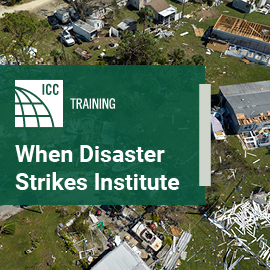
Single Stack Drainage Systems: A Cost-Effective Solution to Water Recycling Challenges
Single stack diversion drainage systems may be the solution to solving water recycling challenges without the astronomical price tag.
The United States has some of the most water stressed regions in the world, prompting more localities to mandate water recycling systems. These requirements often double the quantity of drainage piping needed, as well as the associated labor and material costs.
Compounding the challenge is the fact that the plumbing industry has a skills shortage on both the design and installation side, while housing and construction costs continue to rise nationwide.
Single stack diversion drainage systems may be the solution to solving water recycling challenges without the astronomical price tag.
Single Stack Drainage Systems
The single stack system, also known as a primary ventilated stack, is a drainage piping configuration that relies solely on the stack vent for ventilation. This eliminates the need for a parallel vent stack, vents at traps, wet venting, circuit venting or any other venting strategy that requires a separate vent system at each level along the height of the building.
The single stack is uncommon in the U.S. and Canada, but standard in the UK, Europe, China and many other parts of the world. Its main limitations are that plumbing fixtures must be positioned within close proximity to the stack, and both the drainage load and stack height must stay within specific limits.
However, these constraints align well with the design and scale of most residential housing in the U.S. and Canada.
Understanding and Improving Single Stack Drainage Systems
The loading limitations of the single stack drainage configuration are published in regional standards throughout the world, yet there are significant discrepancies between them.
Some standards also specify maximum allowable stack heights. However, a common oversight across all standards is the failure to account for the increased stack height that becomes feasible when drainage loading is reduced.
Drainage loading is a generic term that represents what “Drainage Fixture Units” and “Discharge Units” aim to quantify: the maximum simultaneous flow likely to occur with overlapping fixture use. It’s well recognized that these flows are widely overestimated regardless of what plumbing code or standard is used within the given region.
A drainage system generally needs to operate within ±400 Pa of atmospheric pressure to avoid compromising the water seals in the traps, which prevents sewer gas intrusion. If a standard four-inch (100 mm) stack is assumed, both drainage loading and stack height are the fundamental considerations for determining if the system can operate within ±400 Pa. Most standards specify a maximum drainage loading and a few also include a maximum height limit.
Suppose a building being designed for greywater recycling will have a stack containing only water closets, and has a drainage loading 50 percent lower than the maximum loading specified in the design standard – is it still limited to the same height restrictions or can it be used in taller buildings without exceeding the ±400 Pa limit?
These are the questions design engineers are faced with when looking at these standards. When in question, a design engineer will choose the lowest risk option, which generally means not using a single stack and designing a system with dedicated vent piping along the height of the building.

Performance Functions, A Brief History
In addition to exploring the performance functions within sanitary drainage systems, I’ve been doing research on the historical development of sanitary drainage systems and the associated codification of design and installation principles, starting with Victorian sanitation reform in the mid-19th century through the end of 20th century.
Many of the strategies employed were based on pseudo-scientific medical theory, such as the miasma theory of disease. Some elements of this practice can still be found in plumbing requirements to this day, since sanitary drainage piping design practice was largely exported from the UK following the invention of the water closet in the late 18th century.
The John Swaffield Laboratory at Heriot-Watt University (HWU) as well as the National Lift Tower have been useful for understanding opportunities for improvement in addition to digging through existing research on this topic, to find opportunities to apply these principles to generalized design guidance and code language. For example, HWU’s AIRNET simulation tool allows for many aspects of the pressure conditions to be analyzed without the need for a testing tower as well.
A Simple Solution
Overall, research shows that single stack drainage systems simplify plumbing by eliminating the need for separate venting, making them a cost-effective solution for water recycling in residential buildings.
Though underused in the U.S., research shows they can meet performance standards while reducing labor, materials and design complexity.
To stay updated on the latest PMG industry news, subscribe to the Code Council’s PMG newsletter here.







